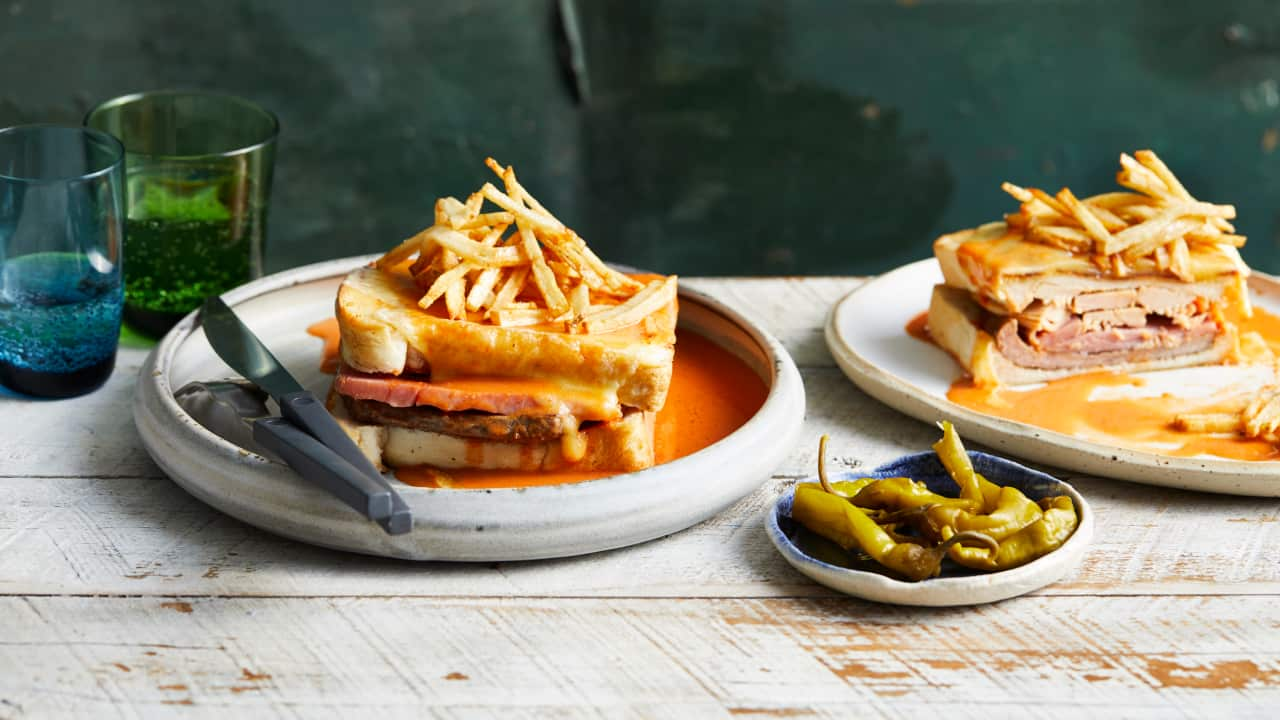Stream free On Demand

21st Century Pub Food
episode • The Cook Up with Adam Liaw • cooking • 25m
PG
episode • The Cook Up with Adam Liaw • cooking • 25m
PG
The seafood chowder at , located in Hobart, blends hearty ingredients with a 40-year-old story about the changing face of our nation’s pub scene.
Hobart’s , established in 1807, was once the pub that people working in the local fishery would flock to. Here at the waterfront hotel, pub patrons would wet their whistles and grab a decent feed to manage their hunger pangs. There are even rumours dating back to the colonial years that tell of hotel licensees who used to from the bank into the hotel’s cellars at night.
“It feels pretty special to work here, in an Australian pub that’s so old,” says hotel manager, Tom Bawle.
Over the years, the pub was renovated and rebuilt, and even given different names.
Post World War Two, thousands of migrants from all over Europe came to Tasmania, particularly Hobart. Across a period of 20 years, to arrive in such a short time came to the southern state. This helped to create a more culturally and linguistically diverse community of pub patrons.
When people taste our seafood chowder, I want them to feel like they are at home.
Then in the early 1980s, Hope & Anchor Hotel staff unknowingly created a piece of pub food history by putting the seafood chowder on their menu. The dish is still on the menu today, served just the way it was decades ago.
“We follow an old recipe, as it’s a time-honoured dish. Today, people who come to Hobart’s waterfront want to eat our seafood chowder and talk about it.”
The hotel’s head chef, Alan Parto, says the chowder is so popular, that it’s offered twice on the menu – as an entrée and main. Both are served with handmade bread.
“In our chowder, we use garlic, leeks potato, onion and cream as is required in a typical chowder,” explains Parto, who was born and raised in the Philippines and has been living in Hobart for four years. “We serve it with scallops, prawns and white fish.
“But what makes our seafood chowder stand out from others is the fish stock that forms its foundation. We make our fish stock from scratch using off-cuts from the fish market here. It creates a precise and intense flavour.”
READ MORE

Clam chowder
The pub’s hearty chowder is revered in the seafood-loving town location, partly because of the dish’s historic association with fish and the freedom of the open water. Seafood chowder originated as a shipboard dish, eaten by seafarers (immigrants from England and France), more than
“Our pub is so close to the water and there’s a big [fish-eating] culture down here because the fish and seafood are really fresh," says Bawle. "Seafood chowder is a dish that everyone just loves.”
The pub’s seafood chowder is also celebrated locally because it offers a warming sense of comfort in a classic Aussie pub.
“When people taste our seafood chowder, I just want them to feel like they are at home,” says Parto.
Tradition v modern dining demands
Although the seafood chowder has remained a constant at the pub for the past 40-plus years, a lot of other things have changed.
“Many years ago, the hotel’s main customers were people who worked in the fisheries on the wharf,” Bawle says. “These days, we serve a good mix of people from all cultures from all around the world. We have our regular ‘locals’ who come all the time, families and tourists.”

The Hope & Anchor's pan-fried market fish, served with a sweet potato curry, cherry tomatoes, peas, fried shallots and lemon.
“We still serve the classic pub dishes like burgers, fish and chips, parmis and schnitzels. But we’ve also elevated the standard of the food at the pub so that it meets customer expectations. When we serve our diners, there has to be love on the plate.”
On the pub’s menu today, you’ll find beef Wellington, pan-fried market fish with sweet potato curry and smoked salmon and prawn pate with toasted brioche, salad and caviar.
When we serve our diners, there has to be love on the plate.
There are also vegan, vegetarian and gluten-free options, plus kid's meals. These menu additions, although common today, were not the ‘norm’ in pubs across Australia 40 years ago.
“When people visit a pub now, they want to receive good service. They want great ambience and lighting. They want to eat dishes made with fresh produce. They want to know where the beef, scallops and fish came from.” He adds that many pub customers in Hobart also want to ensure that the market fish has been sustainably farmed.
Alongside the many modern service features of the pub, there are some traditional elements that Bawle wants to preserve.
“When you work in a pub, you want your customer to walk away having had a great experience. We want to know our regulars and welcome everyone new. We want to have a laugh with our customers and talk to them like family. Most importantly, we just want everyone to feel at home.”




